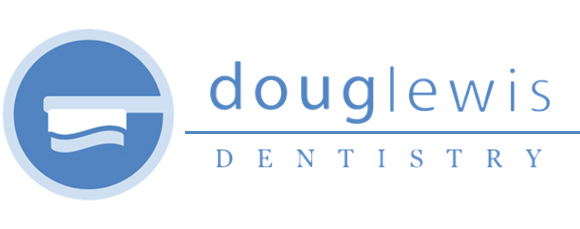If you had to ask anyone if they looked forward to a dentist appointment, it’s highly likely their answer would be a solid ”no”.
Dentists get a bad rap because dental work is usually associated with pain and discomfort. But the reality is that dentists do their best to minimize this pain at all costs.
This is where nitrous oxide in dentistry plays a significant role. It’s highly effective in reducing dental anxiety and is often used for sedation.
If you’re wondering how this magical gas works and how safe it really is, this blog outlines what you need to know.
A History of Nitrous Oxide in Dentistry
Also known as ”laughing gas”, nitrous oxide typically leaves patients feeling giddy and even giggly- working to reduce anxiety and nerves.
When exposed to room temperature, nitrous oxide takes the form of gas, but how was this discovery made?
The chemical was first synthesized by Joseph Priestley in 1772, and soon it became a subject of study by medical professionals far and wide.
It was noted in the book Researches, Chemical and Philosophical that nitrous oxide was successful in relieving patients of anxiety prior to surgery.
Published in 1800, this goes to show that nitrous oxide has been popularly used throughout medicine for over a millennium.
Horace Wells was the first dentist to use nitrous oxide on his patients in 1844. However, other dentists within the industry were still skeptical of its effects.
Wells’ colleague, Gardner Quincy Colton, went on to use nitrous oxide on over 25,000 patients during his tenure, working to popularize its use.
Today, nitrous oxide is used far and wide across the globe by many dental professionals.
How Exactly is Nitrous Oxide Used?
Most typically, nitrous oxide is used to relieve stress and anxiety, nerves or jitters associated with dental procedures.
It is basically used to relax a dental patient before or during a dental procedure, such as fillings, a root canal, and even routine dental cleans.
Nitrous oxide is also used widely throughout hospitals in a bid to relax patients prior to surgical procedures. However, it’s not used as a sedative or any form of anesthetic.
Nitrous oxide is most helpful for young children, those with special needs or high anxiety who have to face their first dental procedure. Many patients are able to withstand regular dental procedures without nitrous oxide if they choose.
How Does Nitrous Oxide Work?
Nitrous oxide has a number of effects on the brain. It works to:
- Block out pain-signaling neurons, decreasing pain sensation
- It boosts the activity of GABA receptors, which decreases feelings of anxiety
- It triggers the release of dopamine in the brain, leading to feelings of euphoria, relaxation, and giddiness
Nitrous oxide is effective in dental procedures as it relaxes patients, making them less likely to gag or flinch with dental instruments in their mouths.
Overall, this makes the dentist’s job far easier and time-efficient.
Nitrous oxide is usually administered in conjunction with oxygen with a gas mask placed over a patient’s nose. The patient then breathes in the mixture of gases.
The dose of nitrous oxide is administered according to the patient’s needs and is at the discretion of the dentist.
It’s important to note that some people may experience different effects of this gas. While some patients merely feel giddy, others may feel light-headed or dizzy.
Some people report feeling a heaviness in their arms and legs, while others feel that time passes much quicker than it actually does.
While nitrous oxide is effective in reducing anxiety, it’s not as strong as most other sedatives used throughout medical procedures.
Patients are still conscious during dental procedures and can converse with dental staff if they need to. However, most people do not remember everything that happened during the procedure.
Once a dental procedure is complete, the nitrous oxide is switched off and the patient breathes in pure oxygen for a few minutes.
This allows the nitrous oxide to exit their system and restore full cognitive awareness.
How Safe is Nitrous Oxide?
Despite the initial skepticism surrounding the use of nitrous oxide throughout the 1800’s, it has been declared 100% safe for use for over 100 years.
It’s a gas that is well tolerated by both adults and children, without any allergic reactions or negative, lingering side-effects.
Your dentist will even allow you to drive yourself home after the administering of nitrous oxide.
There is a 0.5% chance patients will feel nauseous after its inhalation, so your dentist will ask you to avoid eating a heavy meal before your procedure.
Remember to let your dentist know about any medications you’re taking in case they may interact with the gas. But this is generally very unlikely.
Nitrous oxide may not work at 100% optimum if you suffer from a congested nose or have issues breathing through your nose.
Pregnant women are also advised not to use nitrous oxide.
How are Children Affected by Nitrous Oxide?
The American Academy of Pediatric Dentistry has fully cleared nitrous oxide as safe on children. However, dentists should always request permission from parents beforehand.
It may be best to let your child know what to expect when receiving nitrous oxide- most commonly a tingling feeling in their limbs.
Children typically remain conscious during dental procedures and will be able to communicate with the dentist and their staff.
Nitrous oxide and its effects will wear off immediately once the dental procedure is complete.
Looking for a Professional Family Dentist?
At Doug Lewis Dentistry, based in Birmingham, Alabama, you can rely on the expert use of nitrous oxide in dentistry procedures.
Whether you’re looking for teeth whitening, crown fittings, restorations or periodontic expertise, we are your go-to!
Contact us today to schedule your next dental check-up.

